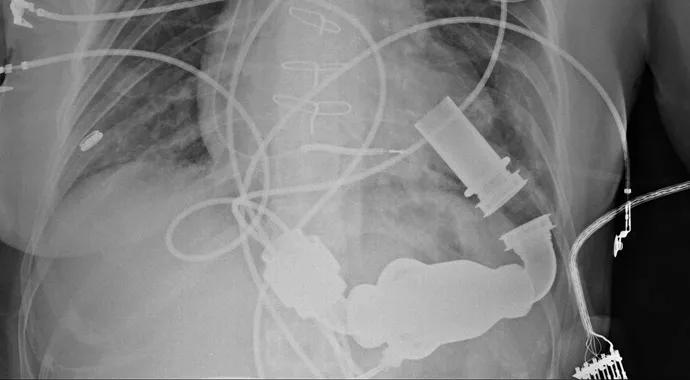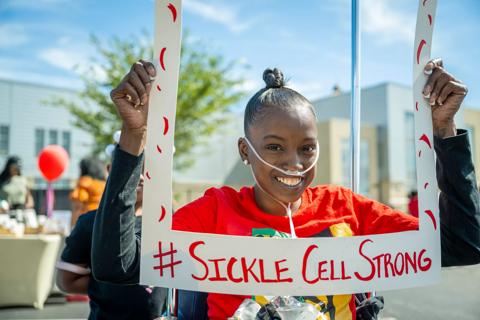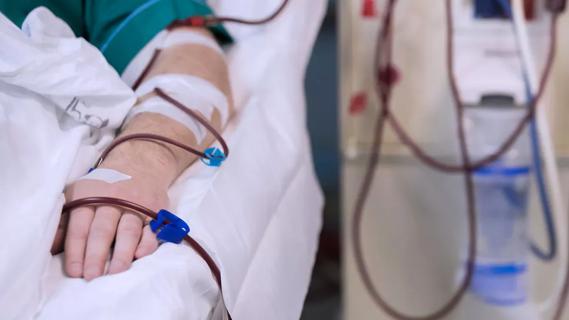Sessions support the value of multidisciplinary approach

Two overarching themes pervaded the Dimensions in Cardiac Care 2014 conference, hosted by the Cleveland Clinic’s Zielony Nursing Institute in November—Multidisciplinary care is critical to success, and nurses are leaders in the charge toward quality care.
Cleveland Clinic is a non-profit academic medical center. Advertising on our site helps support our mission. We do not endorse non-Cleveland Clinic products or services. Policy
Topics featured at the 31st annual conference included interventional cardiology, cardiovascular medicine, cardiovascular surgery, thoracic surgery, transplantation and mechanical assist devices.
“It was a great opportunity to share best practices from different institutions, which helps ensure quality care,” says Myra Cook, MSN, RN, ACNS-BC, CCRN-CSC, a Clinical Nurse Specialist in Cleveland Clinic’s Heart & Vascular Institute and a conference co-director.
No matter what the topic, the importance of teamwork was prevalent. “The conference features our frontline caregivers, but we also invited our physicians to participate,” says Deborah Klein, MSN, RN, ACNS-BC, CCRN, CHFN, FAHA, a Clinical Nurse Specialist in Cleveland Clinic’s Heart & Vascular Institute and a conference co-director. “We offer multidisciplinary presentations on the latest and greatest in cardiac care.”
It makes sense that the educational sessions would be led by nurses, physicians and other healthcare professionals since teamwork is at the heart of quality patient care.
“Everything we do in healthcare is done in a multidisciplinary framework,” says Heather Lachiewicz, MSN, RN, CCRN, CNML, Nurse Manager of the Cardiovascular Surgery ICU at Cleveland Clinic. “I need the clinical expertise of my physician colleagues to care for my patients, while they also need the expertise of nurses to do the same. Working together, we provide excellent care for our patients.”
Lachiewicz participated in one of several sessions co-presented by a nurse/physician team. She and Steven Insler, DO, led a session entitled “Every Drop Counts: Avoiding Hospital Acquired Anemia.” They discussed the causes, effects and levels of severity of anemia; the importance and optimal use of red blood cells; complications of transfusions and ways to prevent hospital acquired anemia.
It made sense for Dr. Insler and Lachiewicz to co-present because they work as a team in the clinical setting to prevent blood wastage and, therefore, hospital acquired anemia. “My physician colleague also felt it was very important to support me as a nurse and show my knowledge,” says Lachiewicz.
Another duo presenting at Dimensions in Cardiac Care 2014 was Laura Schenck, BSN, RN, CCRN, Nurse Manager of Cardiovascular ICUs at Cleveland Clinic, and Jean-Pierre Yared, MD, director of the Center for Critical Care Medicine in Cleveland Clinic’s Heart & Vascular Institute. Their session on “Assessment and Management of Delirium After Cardiac Surgery” was well received.
“We decided to partner so we could educate nurses on what they would expect to see for orders in a delirious patient and to review nursing best practices to share with other facilities,” says Schenck. During the presentation, Dr. Yared shared what constitutes delirium, its affects and pharmacological interventions for treatment. Schenck covered how bedside nurses screen for delirium and what non-pharmacological interventions are used to prevent or treat delirium.
Conference attendees came from 20 states to hear about new approaches to valve repair and replacement, the use of cardiac assist devices, advances in vascular and cardiac hybrid procedures and much more. “All these cutting-edge interventions require nurses and physicians working hand-in-hand to care for patients,” says Klein.
Before healthcare professionals can truly partner, though, nurses must view themselves as leaders. Dimensions in Cardiac Care 2014 showcased nurses in leadership roles and featured a final session called “Every Nurse Is a Leader,” co-presented by Joan Kavanagh, MSN, RN, NEA-BC, Associate Chief Nursing Officer of Nursing Education and Development for Cleveland Clinic, and Lydia Booher, MSN, RN, ACNS-BC, ONC, a Clinical Nurse Specialist.
“Every nurse has to see themselves as leading in some capacity,” says Cook. “This is an important message as we move forward as a profession. We must inspire nurses to believe that they are leaders.” During Dimensions in Cardiac Care 2014, that message – along with the importance of a multidisciplinary approach to patient care – came through loud and clear.

Cleveland Clinic’s Executive CNO reflects on the image of nursing, aspirations for nurse leaders and more

Advice for preventing the negative physical and mental effects of sleep deprivation

Leadership rounds educate nurses and foster teamwork

Phone triage system reduces call backs and delays in care

Nurses play key role in comprehensive lifetime treatment program

Customized bots improve speed, efficiency by streamlining daily clinical, clerical tasks

Nurses play pivotal role in patients’ ability to recover in the comfort of their own homes

New protocol reduces costs, increases patient and caregiver satisfaction